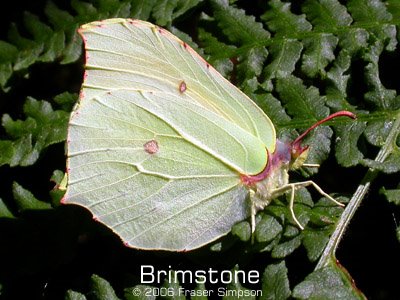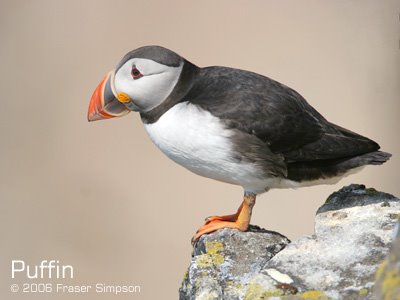Friday, July 28, 2006
Desert Bound
Thanks for visiting.
Wednesday, July 26, 2006
Western Scrub-Jay along the River Ayr


Monday, July 24, 2006
Scotch Argus at Changue
Pinbain Burn in the Lendalfoot Hills offered 40+ Graylings and at least one Northern Brown Argus was still flying.
Down in Currarie Glen, conditions were less than ideal for observing Purple Hairstreaks (hot sun and no wind!). Scanning the low, scrubby oaks on the steep hillside of Shallochwreck Burn found no perched hairstreaks in the fairly strong wind. Then, during a brief period of direct sunlight, I watched with the naked eye for some to fly and almost immediately one zipped down hill and landed on the nearest oak, allowing nice views through the optics. A walk down to Currarie Port and around Donald Bowie resulted in 62 Graylings, two Painted Ladies, a single Dark Green Fritillary and a number of Green Tiger Beetles.
Back home on the edge of Kilmarnock, an Oystercatcher flew over the busy Irvine Road to Annandale Golf Course. Hanging from it’s bill was a long worm. This bird was nesting in the area last year as almost the same sight greeted me while driving in the opposite direction, almost a year to the date. Back in the garden, froglets have emerged from the water. For more photographs of these, have a look at my other (wordless) blog: http://luminousnature.blogspot.com/








Saturday, July 22, 2006
(No) Graylings at Moorfield
Friday, July 21, 2006
Arson catastrophe for Thursley Heath
Just heard the devastating news that Thursley Heath/Common NNR has been completely destroyed by the recent fire. I knew it had been bad but not this bad. The heartbreaking thing is that this appears to have resulted from a selfish act of environmental vandalism with a “52-year-old, from Thursley questioned on suspicion of arson after being arrested” (from the BBC). I imagine that it could take at least a decade for the habitat to recover. Whoever is responsible for this should be made to do backbreaking, unpaid conservation work for the rest of their shameful existence (preferably while being birched!).
See the following links for the news.
BBC
http://news.bbc.co.uk/1/hi/england/southern_counties/5184582.stm
English Nature
http://www.english-nature.org.uk/news/story.asp?ID=811
Monday, July 17, 2006
Thursley Heath Dragonfly Safari
Beautiful Demoiselle Calopteryx virgo
Banded Demoiselle Calopteryx splendens
Emerald Damselfly Lestes sponsa
White-legged Damselfly Platycnemis pennipes
Large Red Damselfly Pyrrhosoma nymphula
Small Red Damselfly Ceriagrion tenellum
Azure Damselfly Coenagrion puella
Common Blue Damselfly Enallagma cyathigerum
Blue-tailed Damselfly Ischnura elegans
Red-eyed Damselfly Erythromma najas
Small Red-eyed Damselfly Erythromma viridulum
Southern Hawker Aeshna cyanea
Brown Hawker Aeshna grandis
Emperor Dragonfly Anax imperator
Downy Emerald Cordulia aena
Brilliant Emerald Somatochlora metallica
Four-spotted Chaser Libellula quadrimaculata
Black-tailed Skimmer Orthetrum cancellatum
Keeled Skimmer Orthetrum coerulescens
Common Darter Sympetrum striolatum
Black Darter Sympetrum danae
The area is pretty rich in other quality wildlife and when not observing dragons I found at least 11 Silver-washed Fritillaries, White Admiral, Silver-studded Blue, Grayling, Dartford Warbler, Woodlark, Tree Pipit, Crossbill and a couple of Green Sandpipers. The heathland is very dry at the moment and the local fire fighters were controlling areas of burning heather. One of the boardwalks, which I guess is meant to cross some wet bog (but was completely charred), was damaged by the fire and I saw none of the Common Lizards which are regularly seen basking here. The high temperatures meant that insects were very active and most would not rest long to be photographed.










Monday, July 03, 2006
Day Trip to Isle of May














